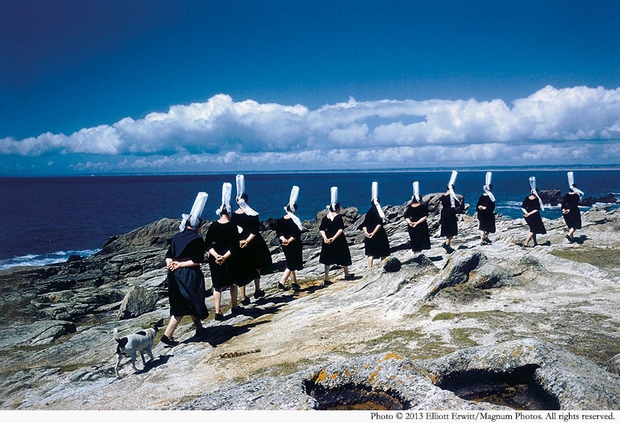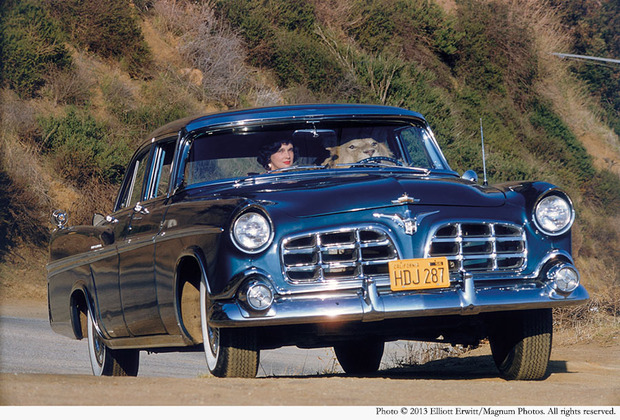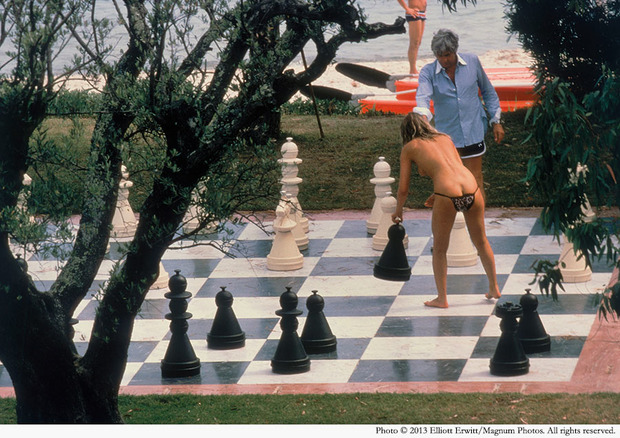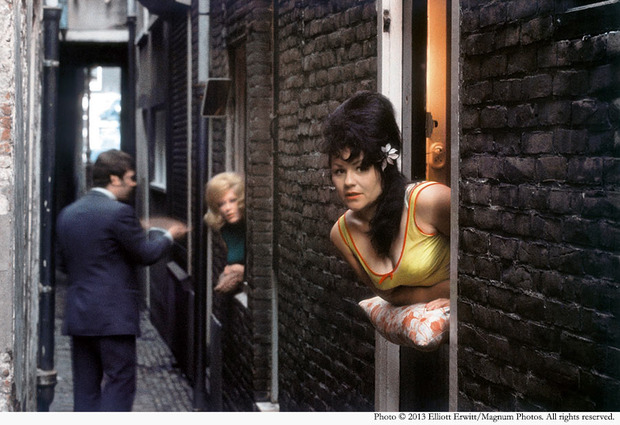Interview: Elliott Erwitt
The iconic photographer’s book “Kolor” spans over 50 years of historic color images

Even if you are not familiar with his name, you’ve seen his photography. Elliott Erwitt’s work captures historic moments, famous faces and breathtaking landscapes. For over 50 years the NYC-based photographer has been amassing culture defining imagery. Now, his first book of color photographs, the appropriately titled and bearing a nod to George Eastman—”Kolor“—graces bookshelves. Published this month by teNeues, “Kolor” features 240 photographs selected from a vast archive of almost-forgotten Kodachrome and Ektachrome film slides. This tome—by way of exquisite, crisp color photography—documents so much of the last half of the 20th century. Erwitt was there; he captured it. There are moments of great comedy, instances of deep reflection and appreciation and his editorial eye embraces each subject with understanding and delivers it to the viewer with inspiration. The entire collection is nothing shy of epic.
From over 500,000 images, Erwitt selected moments such as Marilyn Monroe’s white halter dress flying up over the subway grate, to portraits of Che Guevara, Fidel Castro, and John F Kennedy in the Oval Office. At times, it is impossible to believe one man was able to see it all. The photos stand as a diary of memories and is presented as such, with juxtaposition ignoring chronology, but focusing on the movement of the eye. CH discussed “Kolor” with Erwitt, in an attempt to better understand the man who embedded the visuals into our brains for so many milestones.

This is your first book of color photographs. Why this project, now?
This is actually my second. The first was under an assumed name. It came out three or four years ago, but it was a spoof. As for why now—why not?
How did you skim through over half a million images to select the 420 that were included?
I had help from a team of two. Most of these images were in storage. We had been at it for a long time. We made little prints and began putting them on the floor to begin sequencing. We were looking for flow. We began to cut down our selections from there.

Did you set out with a dominant through-line for all the images that would be included? Or did you discover one?
Surprise. Many pictures I had forgotten about or didn’t even know I had. Some were from assignments, others were not. Some date back to the early ’50s. I was quite surprised by what I saw. Kodachrome is impervious to change. Ektachrome is fugitive, but we’ve managed to restore great quality.
Regarding layout, how did you decide to place the photos together?
I once again worked with designer Stuart Smith, who came in from London. We began laying everything out on the floor to see what we had.
This collection includes a diverse array of iconic moments, landscapes, and even shots that are inherently comedic. As a photographer, how were you able to master so many genres?
I don’t know about mastering, but I’ve been at this for a very long time.

Do you have a personal favorite in this collection? If so, can you define the moment that created it?
There isn’t one moment. There are a few. I recall taking each of those favorite photos under special circumstances.
These images are all Kodachrome or Ektachrome. What lead you to these types of film?
They were what was available at the time for what I was doing. Kodachrome was good to use and it is fast. Ektachrome could be developed quickly. When taking these photos, I wasn’t figuring that I would be making a book 50 years later.
This project is so comprehensive. It feels like we are living your life across the last 50 years. What fell between these moments?
My black and white photographs are the in-between moments. They function more as a diary and are just as comprehensive. This was my left hand, you might say.
What do you hope this book will convey about your work?
Maybe half of these photos come from assignments. This was my “second camera.” I want this book to amuse and entertain—to show people things that they haven’t seen before.
“Kolor” is available for purchase from teNeues for $125. It is also available as a Collector’s Edition limited to 100 copies, which is accompanied by a signed photo print. View more of Erwitt’s photography in the gallery.
Images courtesy of teNeues Publishing. © Elliott Erwitt/Magnum Photos.



















